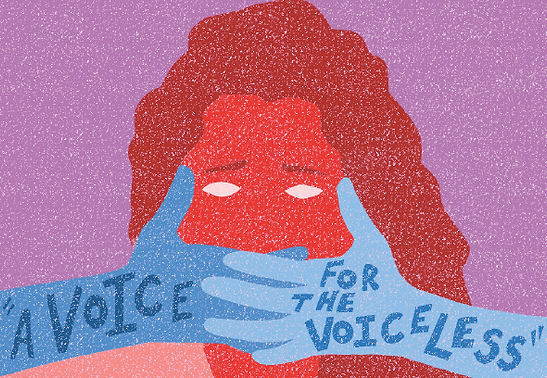
An art piece I created to accompany an article I wrote about Autism Speaks in my junior year.
commitment to diversity
Every year, one of the first projects Mrs. Thrun will have her journalism students do is a personality profile of one of their classmates. I've been the subject, then, of three class projects. The memories of those interviews are fuzzy --- it could have been my sophomore year, or maybe when I was a junior --- but I can clearly remember telling my project partner something that I still replay in my head. As they worked through the list of suggested questions, they asked me why I wanted to study journalism, what I wanted to get out of the class. And I said what I saw as the obvious answer, the only answer, even: I wanted to study journalism because people had voices, and I wanted to hear them.
The dominant narrative in this country is one that favors the rich, the white, the able-bodied, the typical. When, sitting at the back of the journalism room, I said I wanted to hear people's voices, I was talking about the people who don't fit that description. To me, journalism had always been about uncovering truth. I knew the truth was that the world was incredibly diverse, and being a good journalist would mean sharing the stories of people from every background and situation.
Though I come from a school which is not particularly diverse, I've made a conscious effort to represent the diversity that EHS does offer. In last year's yearbook, my co-editor-in-chief and I worked to make our book a celebration of the many stories our school had to offer, from a student's experiences in a Nicaragua orphanage to a Muslim-American student's work calling attention to the difficulties she'd faced in our school district. This year's book will continue the trend, featuring students who work to make our community a better place, like a group of Black students helping the homeless population of St. Louis through their church and a Korean-American student promoting her culture in Edwardsville by starting a kimchi business.
Those experiences have helped me work towards my goal of telling diverse stories, but the other side of diversity in journalism wasn't obvious to me until I realized I wanted to work in the field for the rest of my life. When I started to picture myself and my classmates as journalists, I started to notice how homogenous journalism could be.
I couldn't shake the idea that, for people to listen to the story you were telling, you were expected to be a gray-haired Ivy League graduate in a thousand-dollar suit. I published an article about Autism Speaks in The Claw last year, one of the first times I'd ever talked about being autistic in public, partly because I'd been tormented two years before by the realization that I couldn't name a single autistic journalist, and I didn't know how the field would accept my differences.
This year, my journalism class has 10 students representing different cultures, orientations and backgrounds, and it's only been in recent years that I've seen professional journalism reflect that diversity. I've seen my classmates embrace their identities to write articles defending drag queens, rap music and the importance of representation in media. I can only hope that the journalism field, and the unique environment of EHS journalism, will continue to grow more diverse and reflect the experiences of more people.